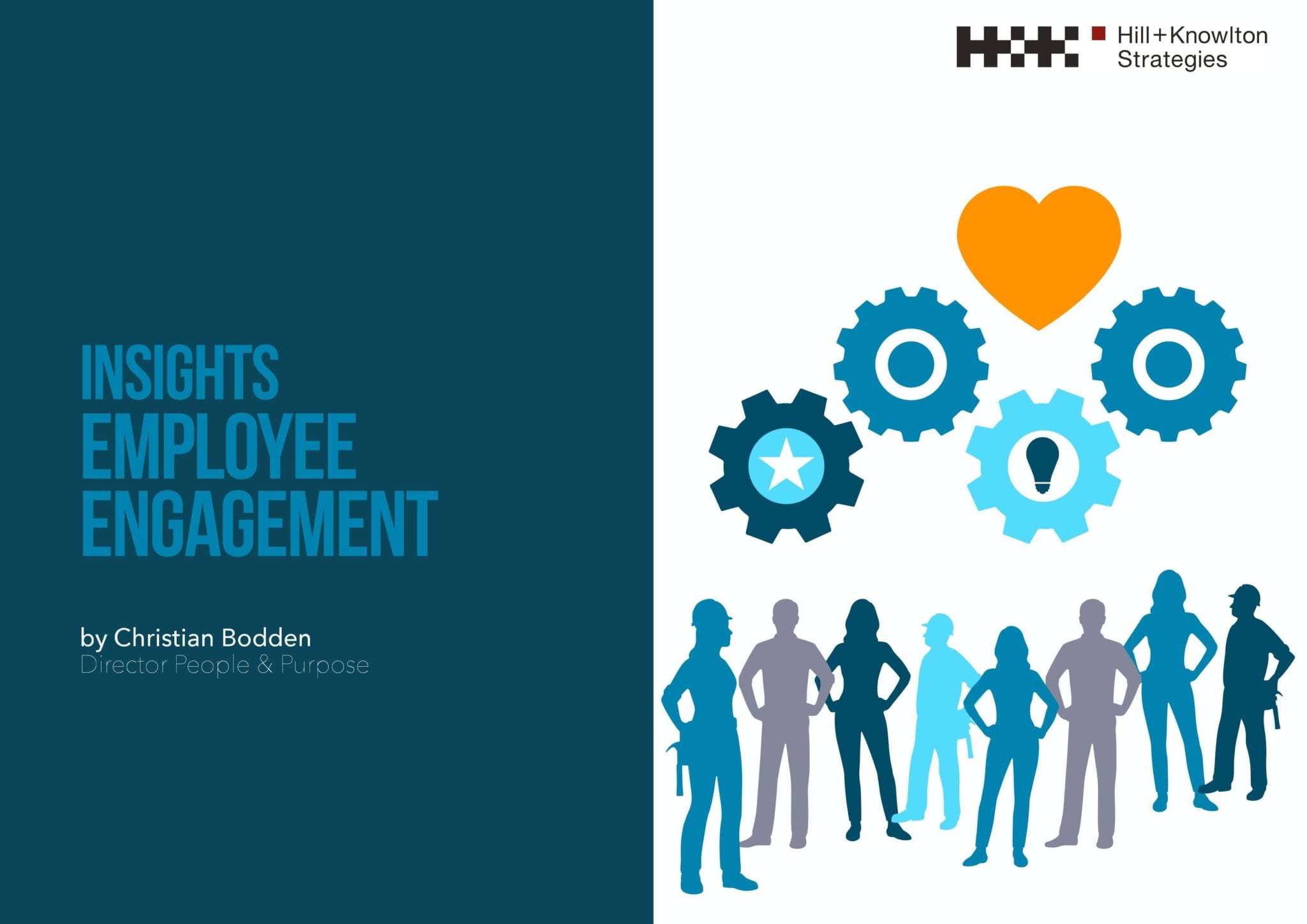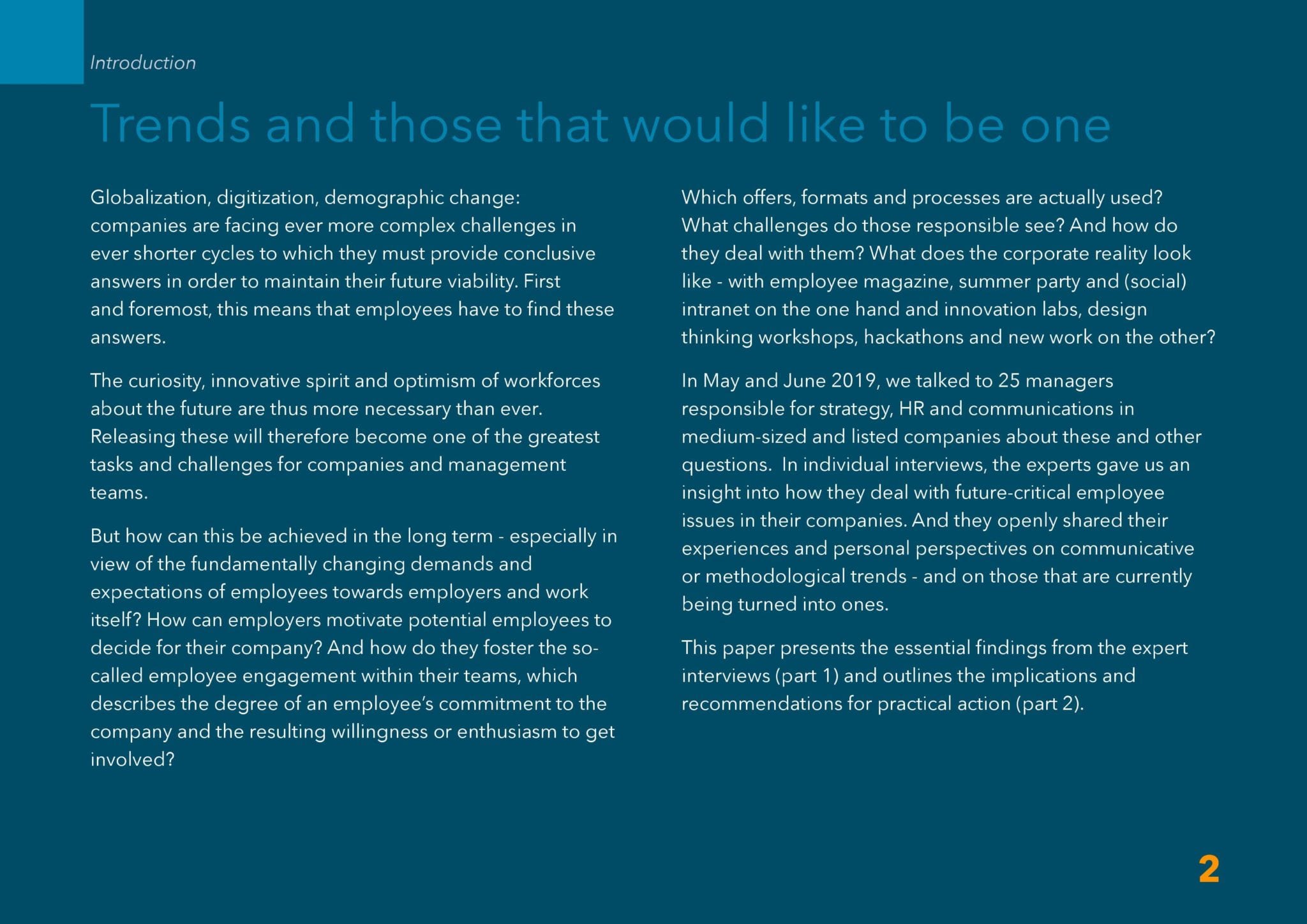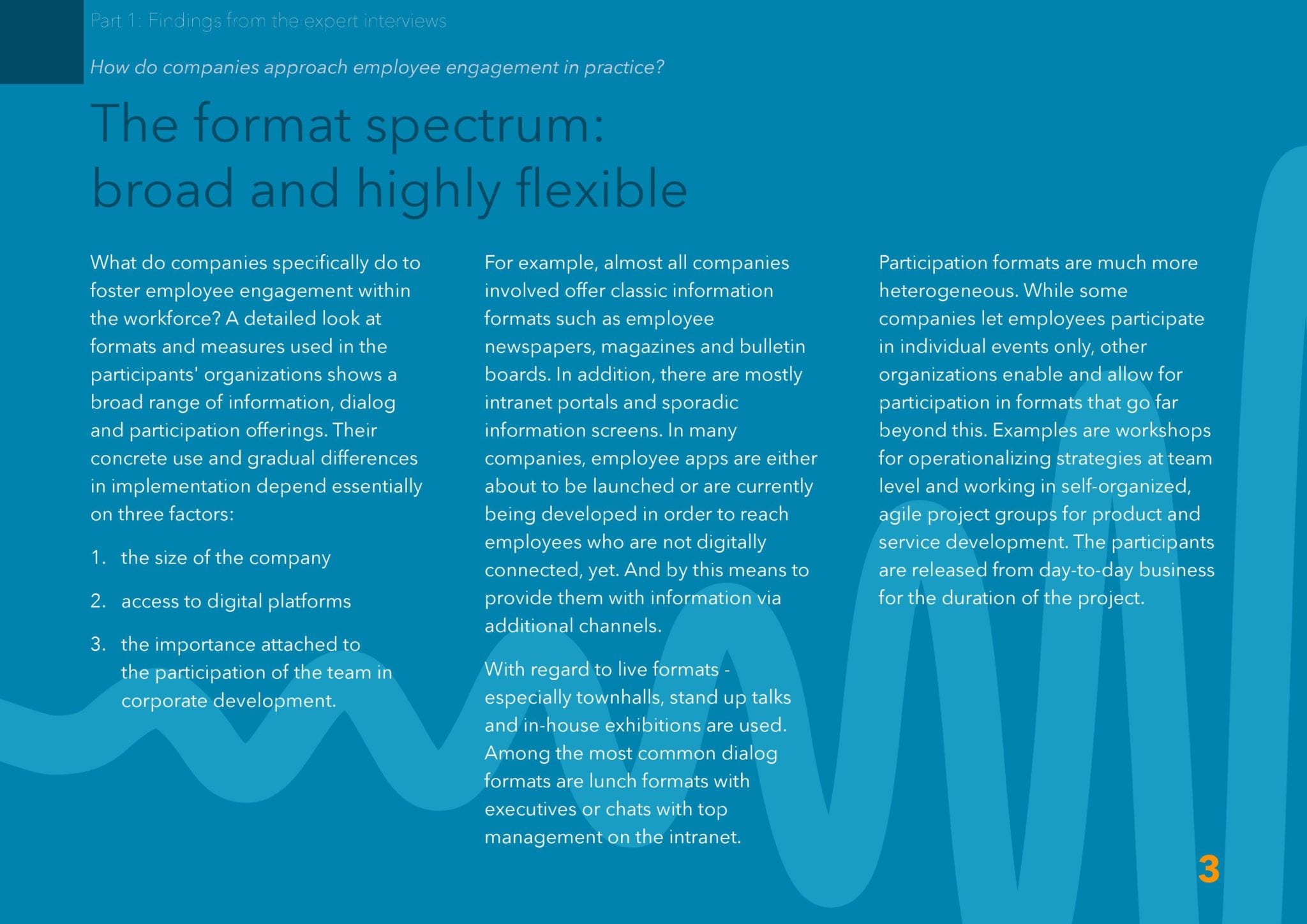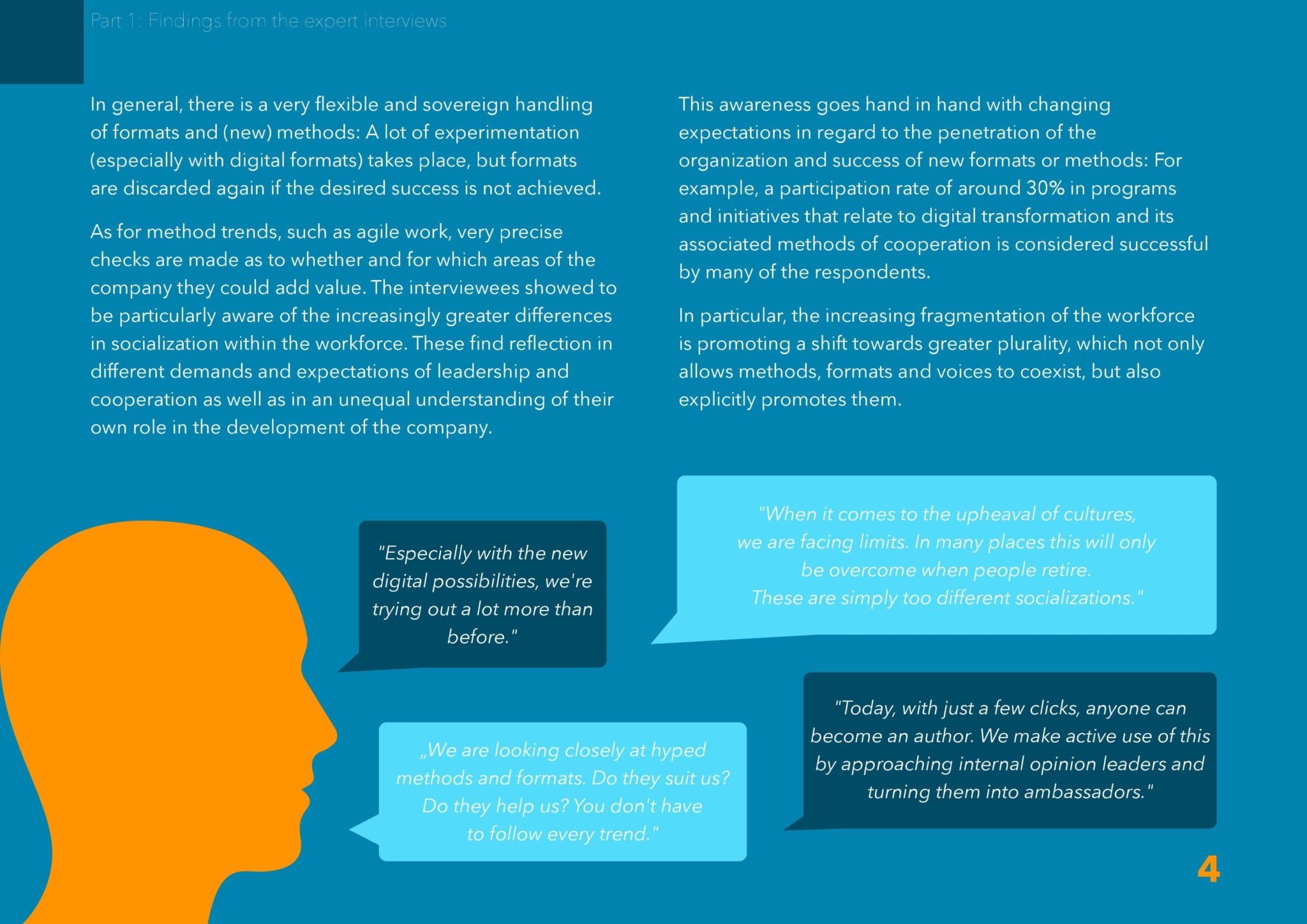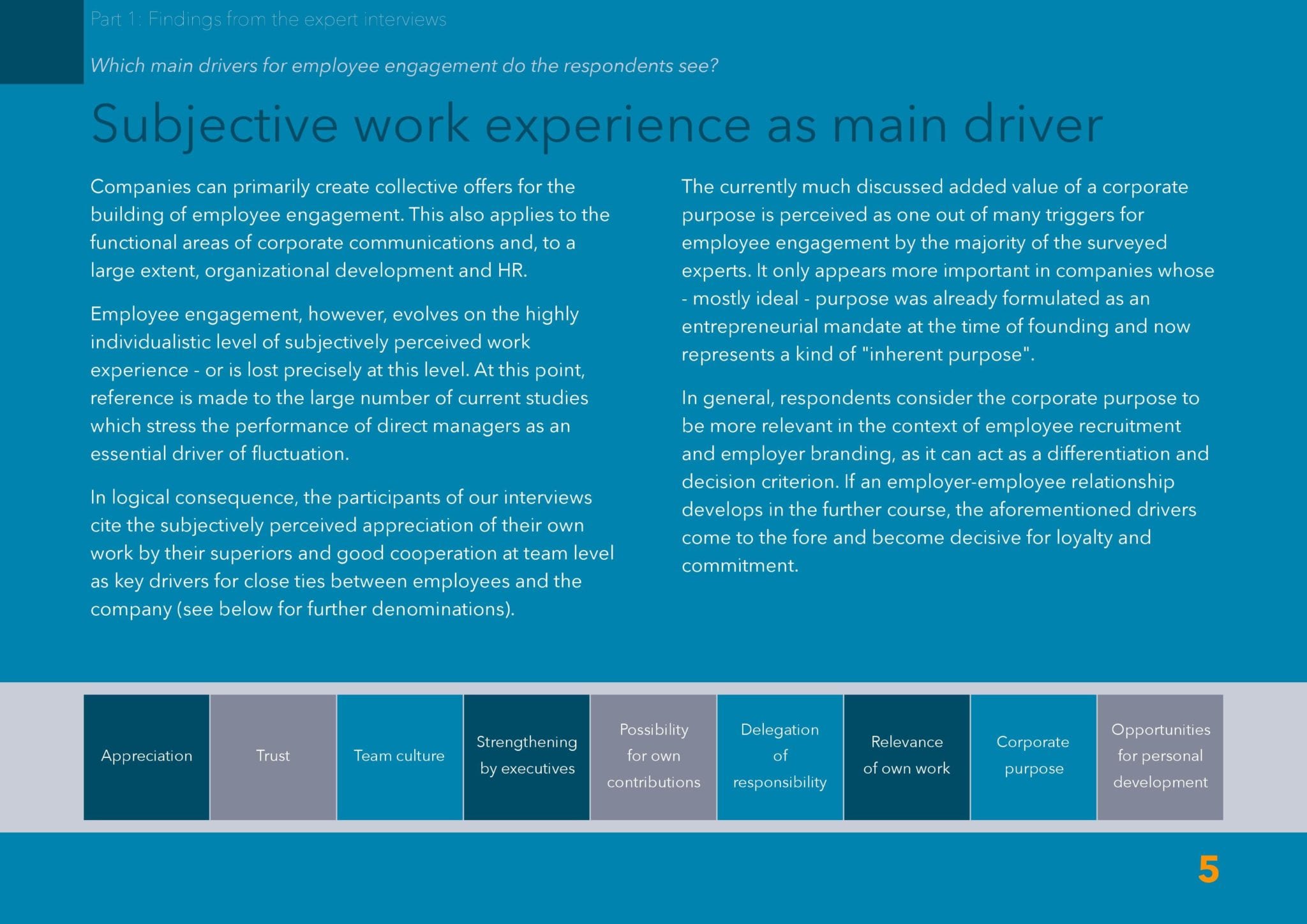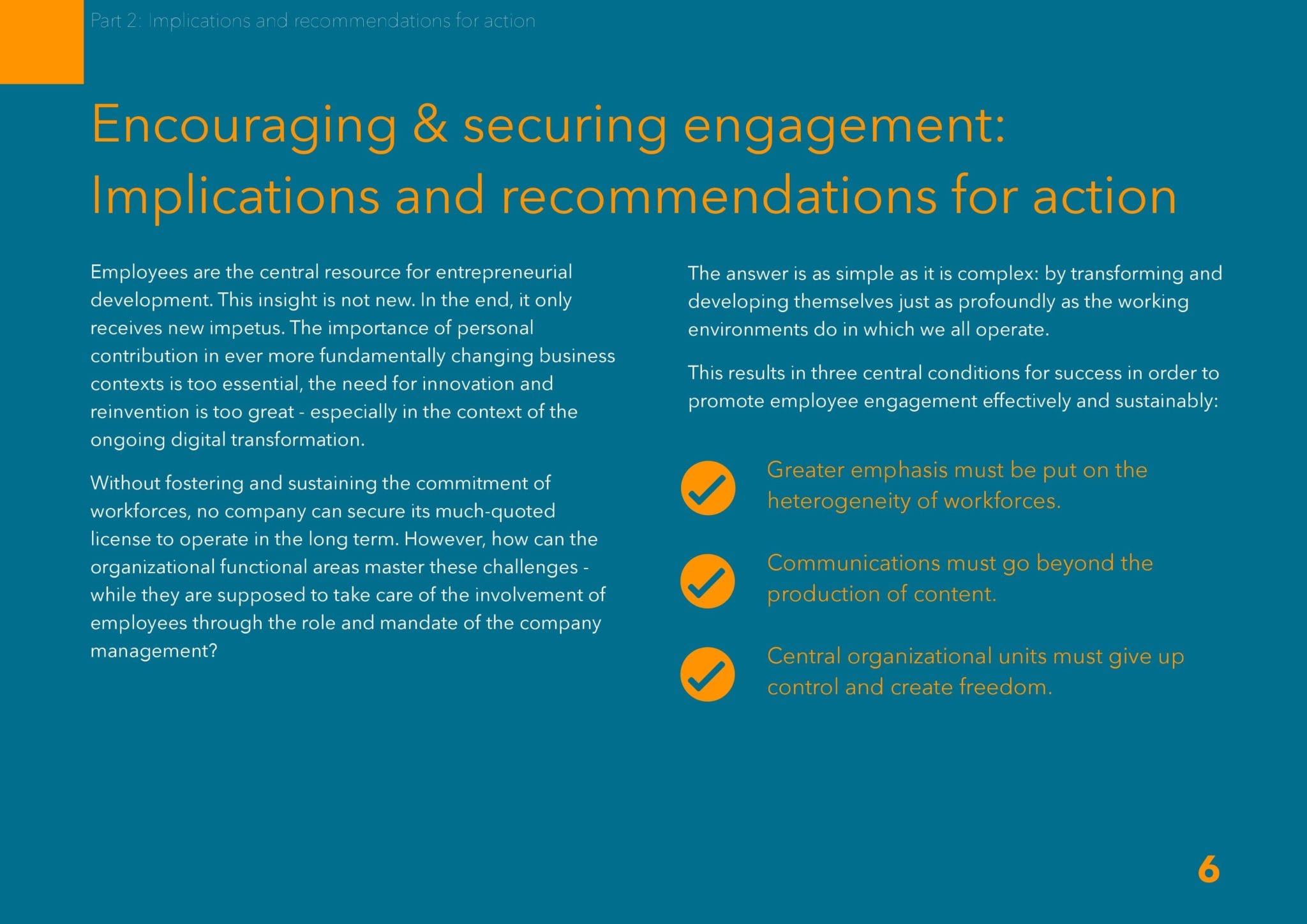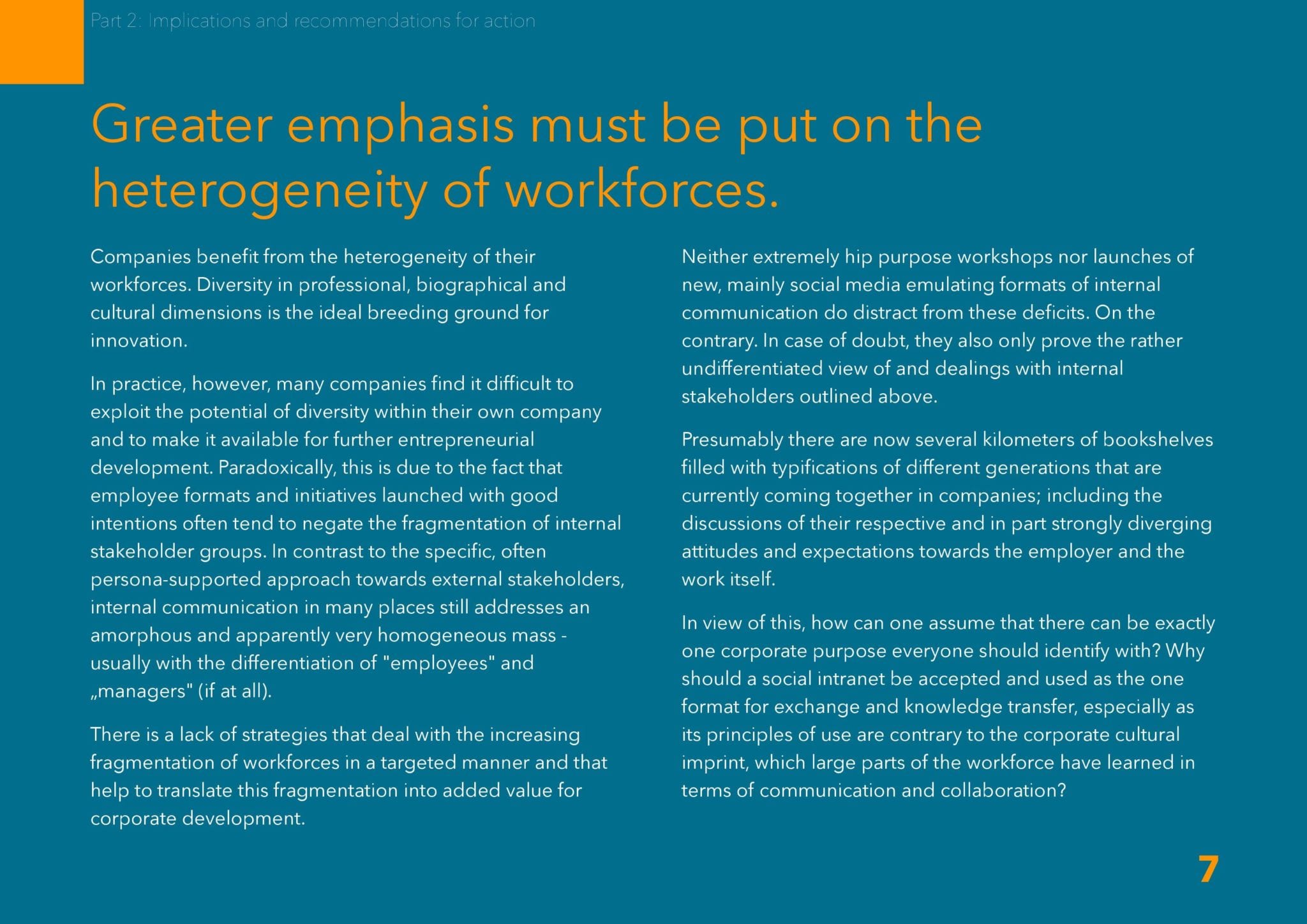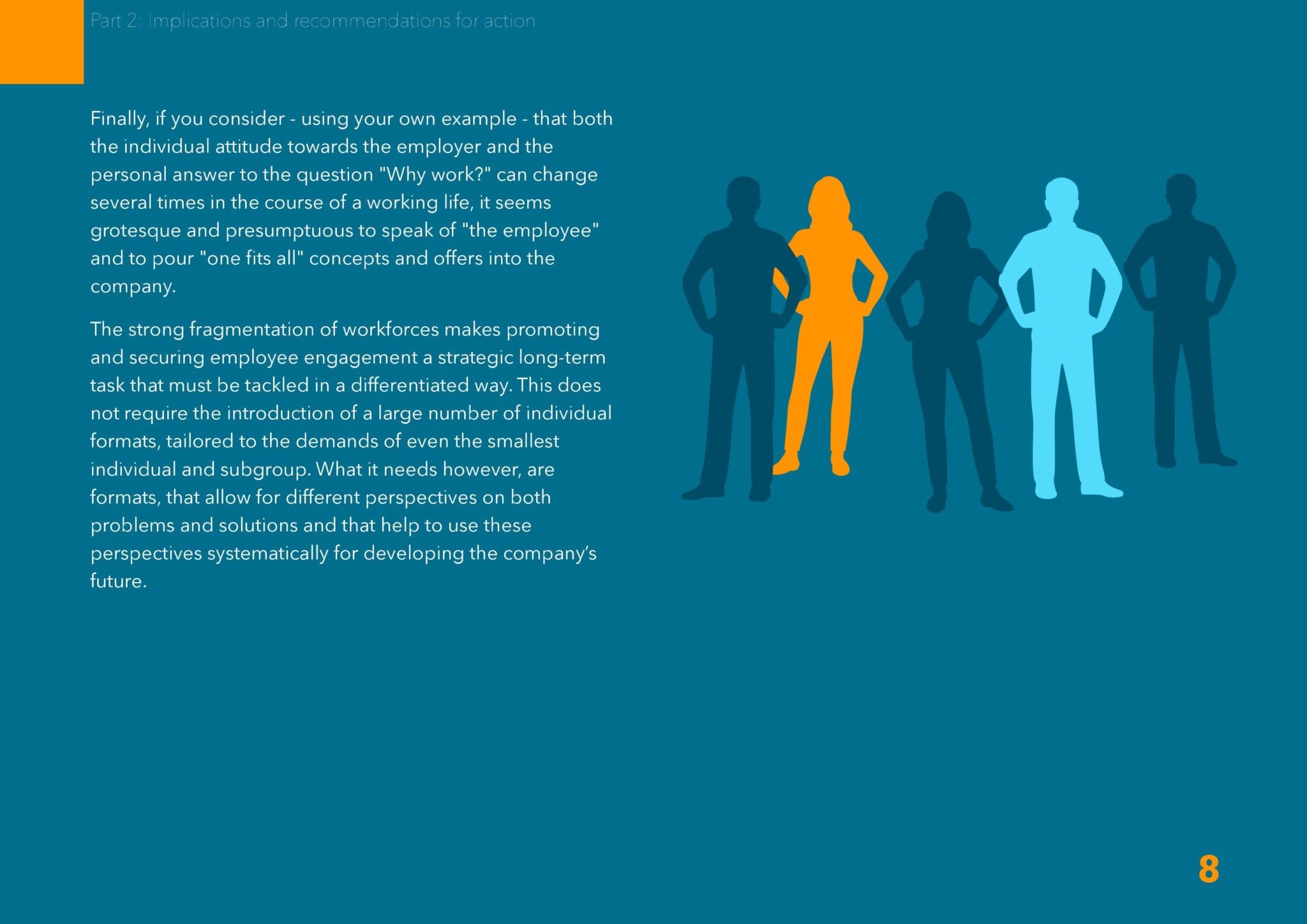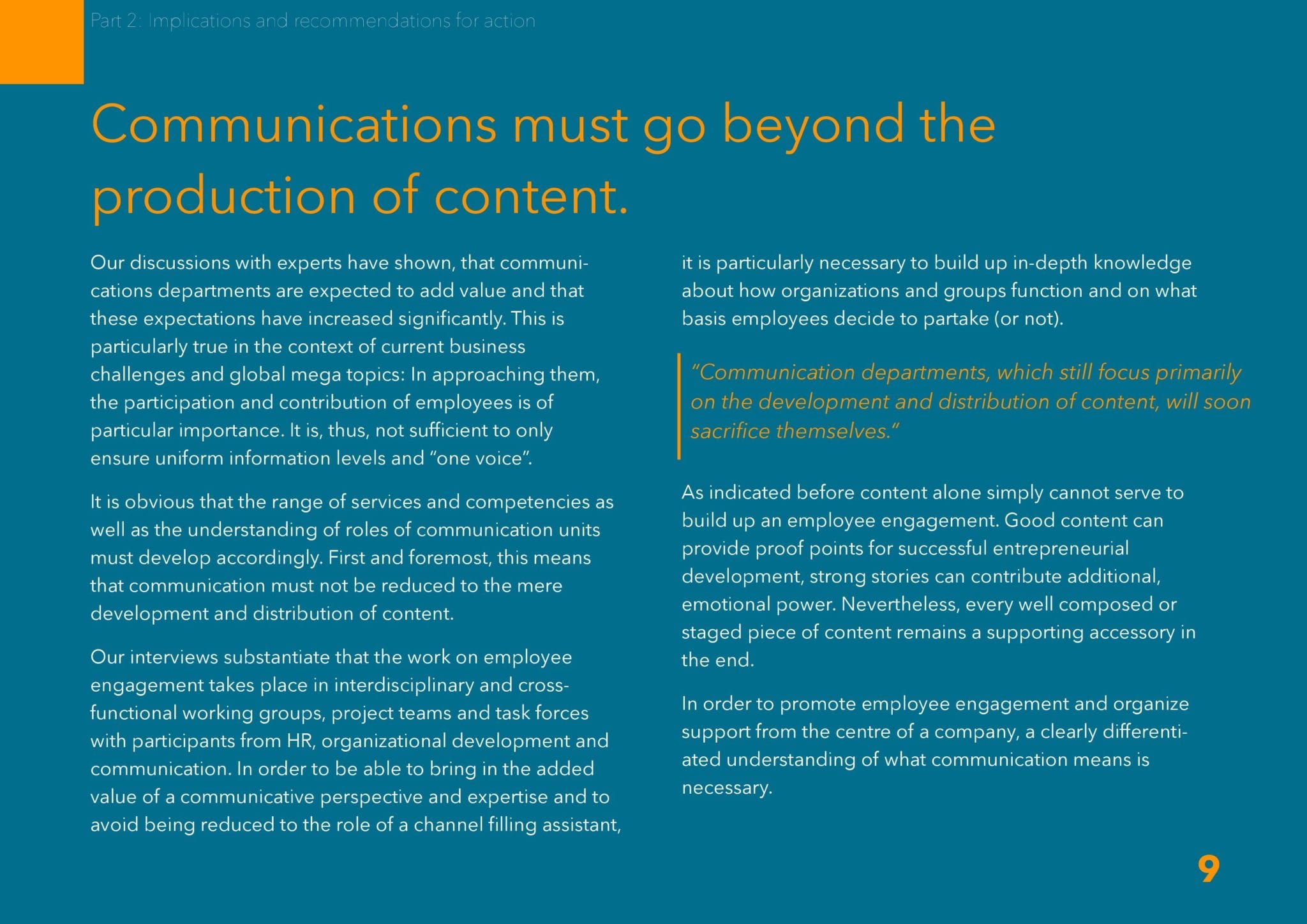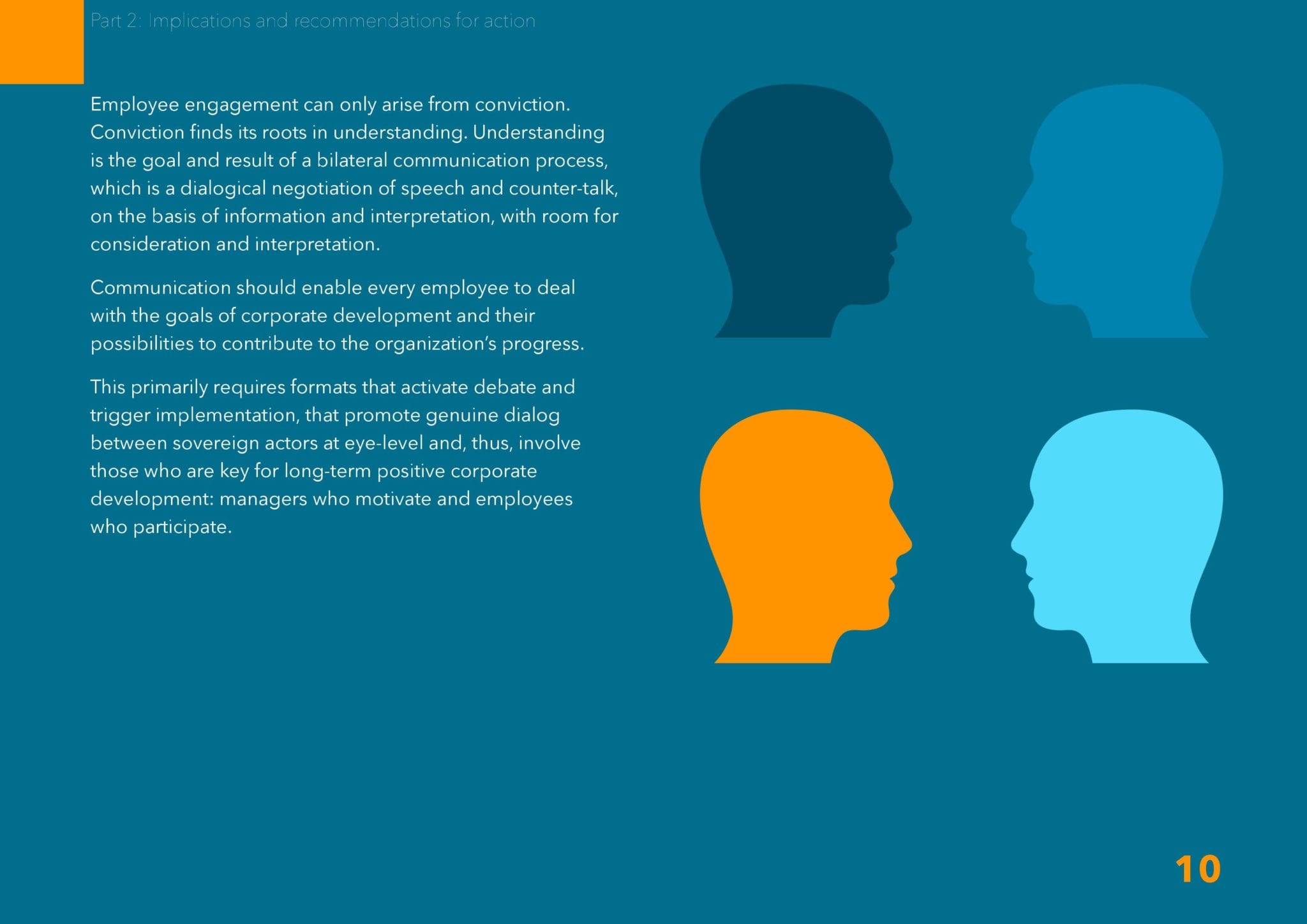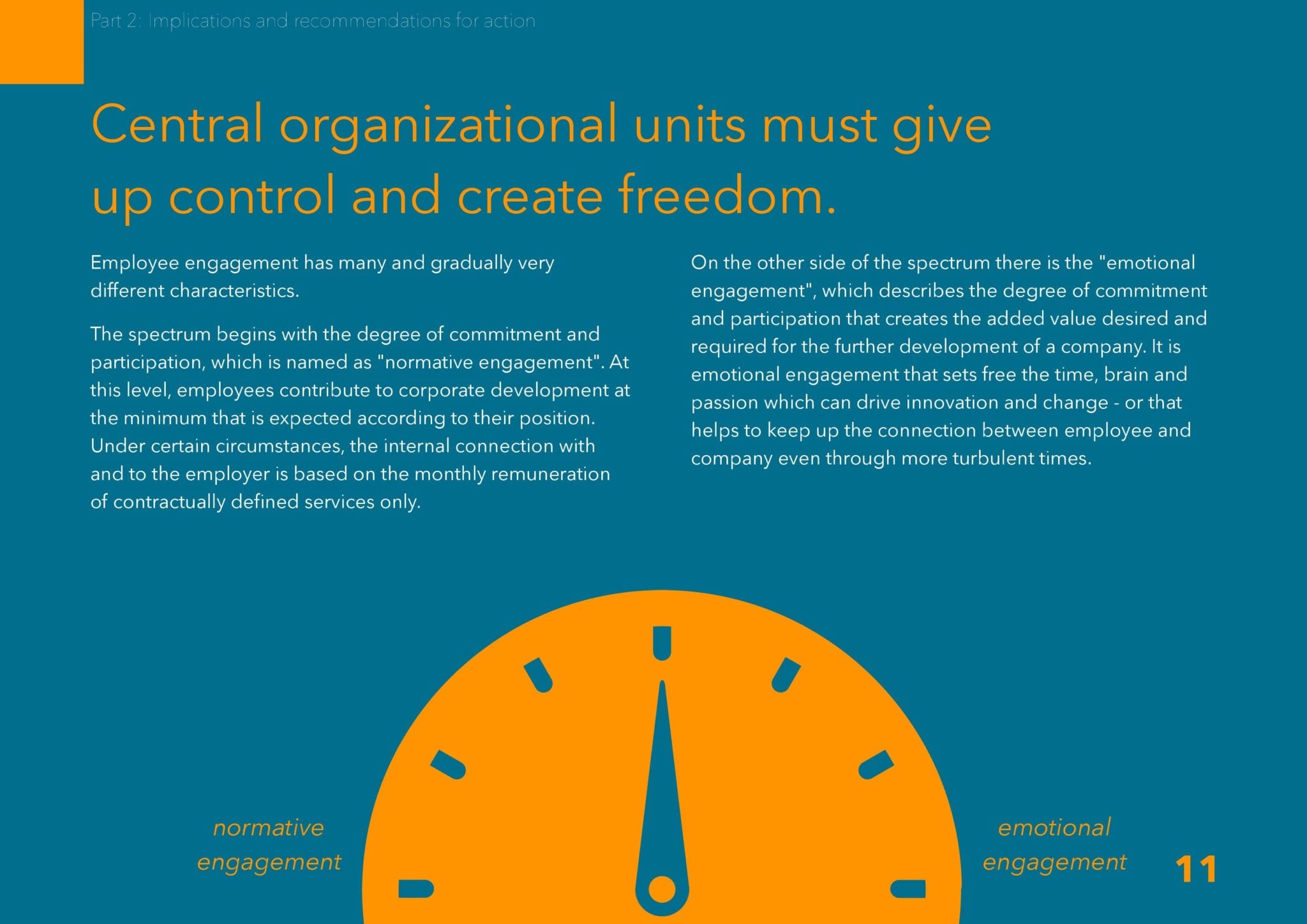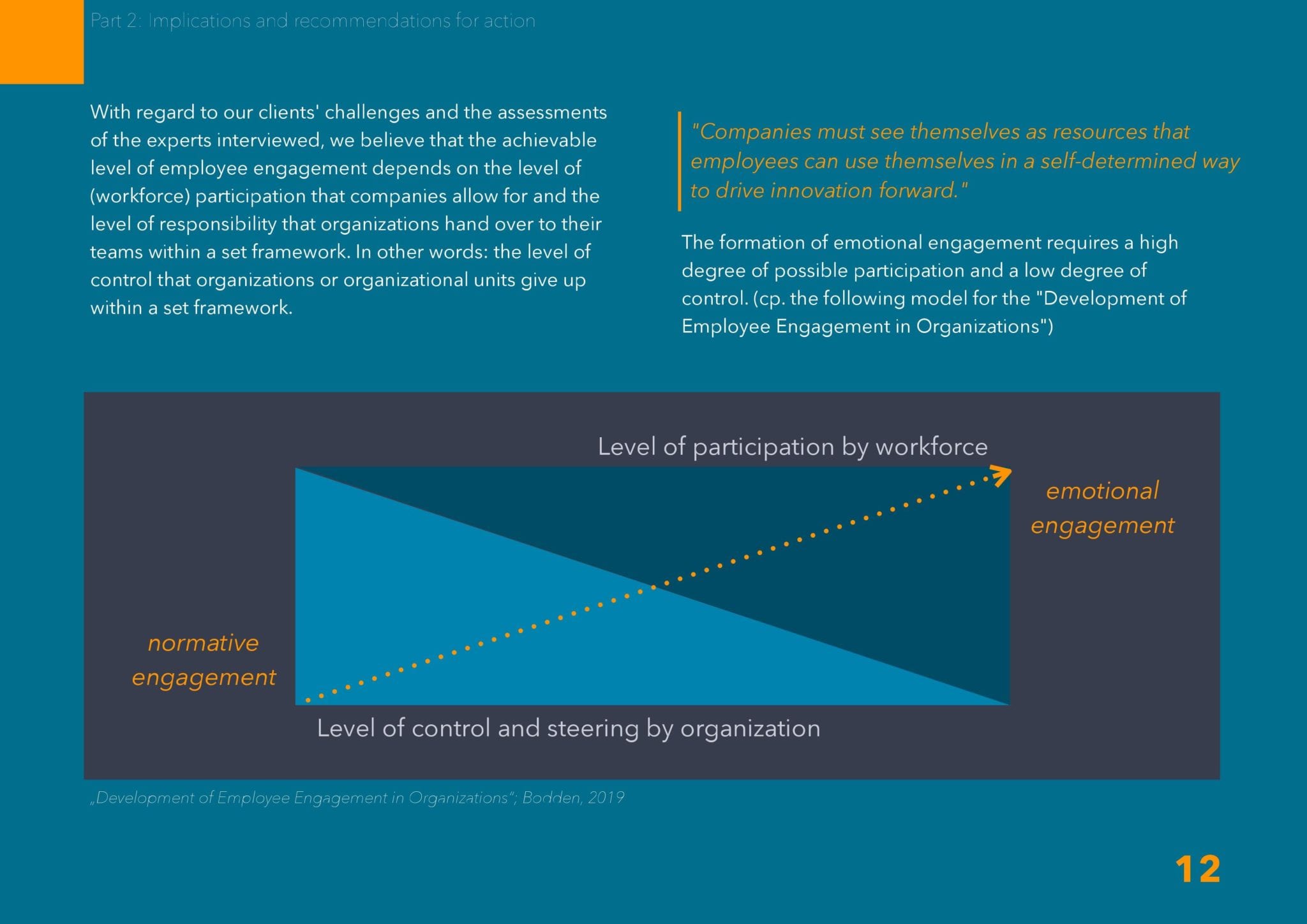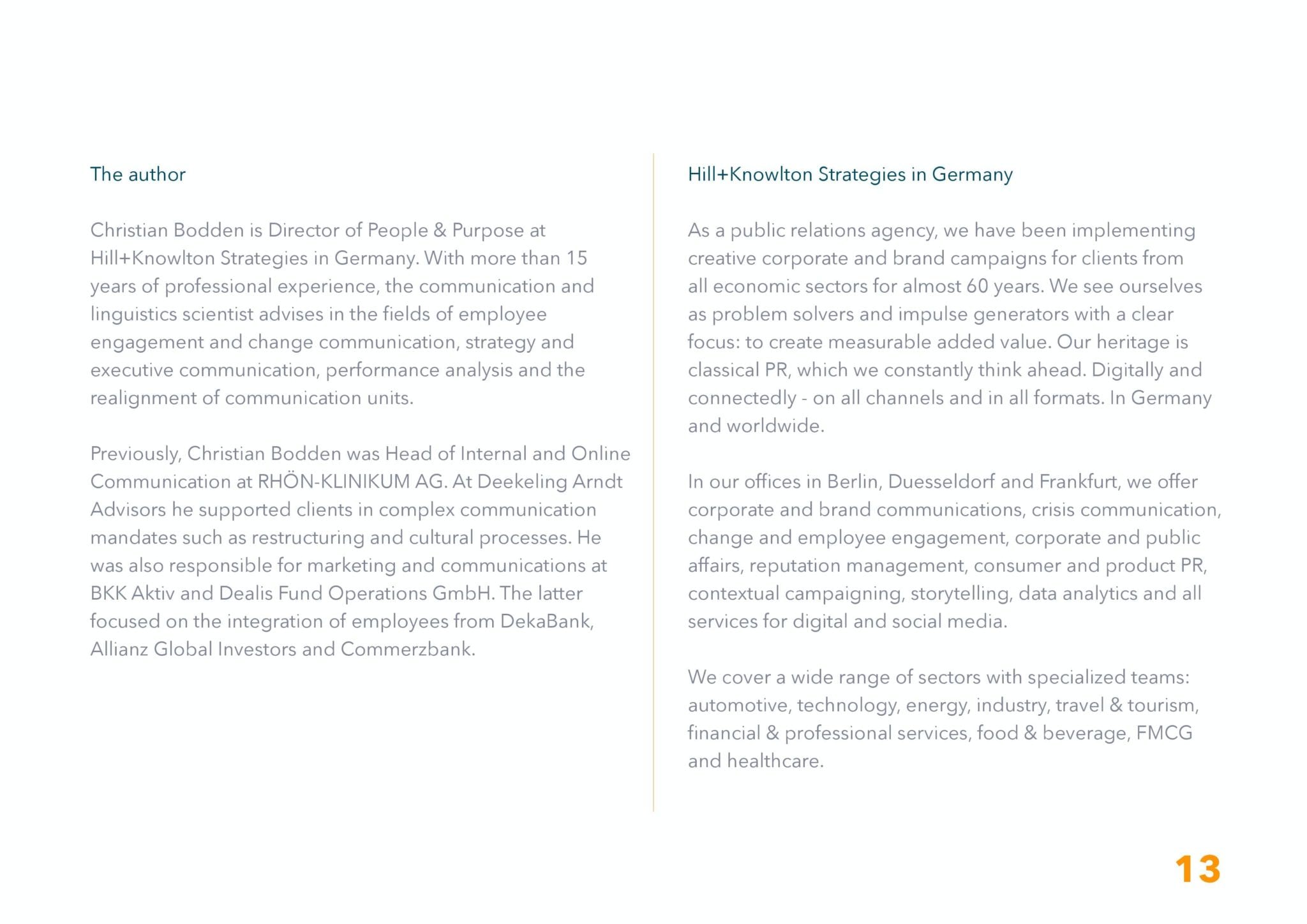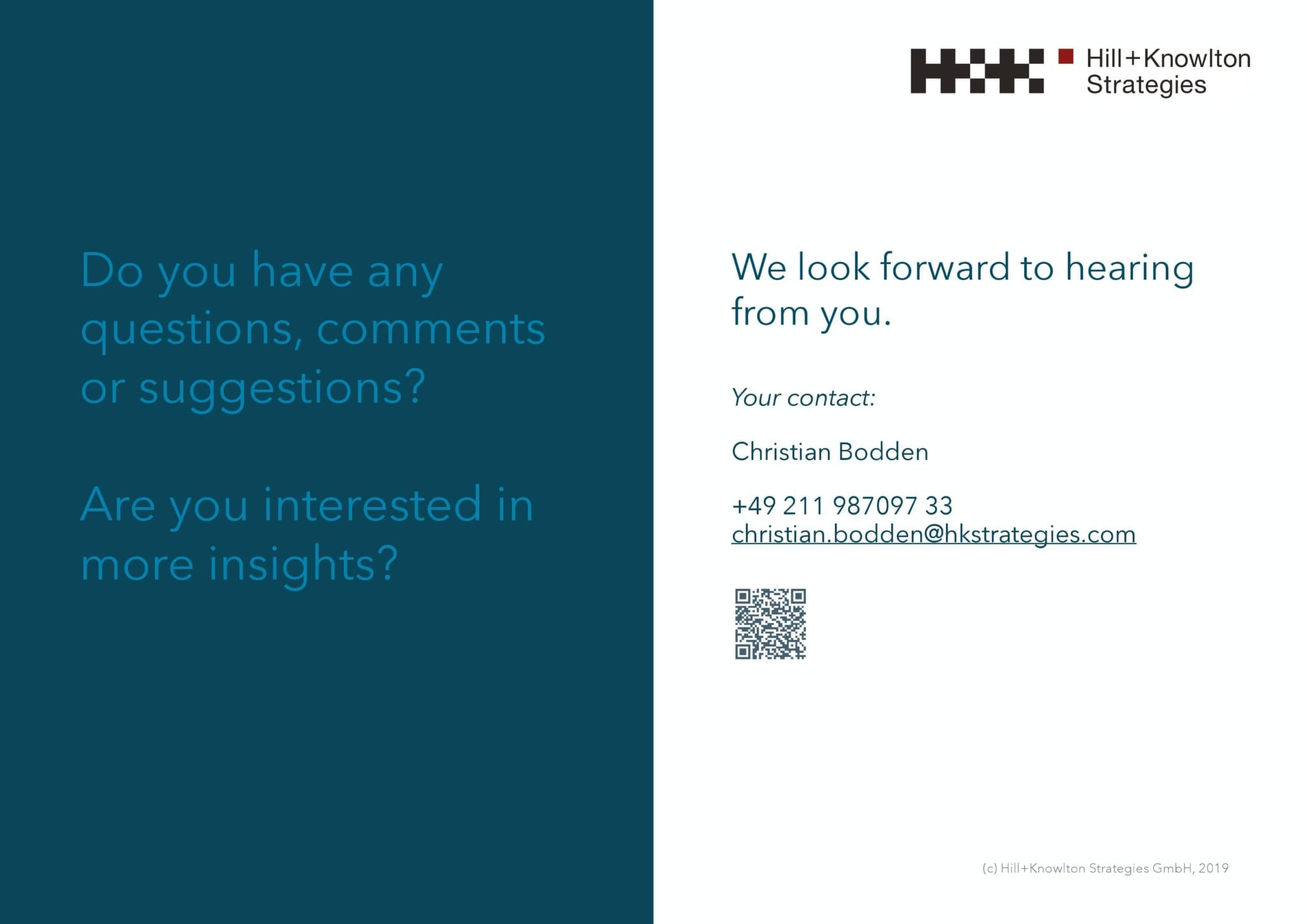Key findings of the Hill+Knowlton Whitepaper on Employee Engagement from July 2019
Employees are the central resource for entrepreneurial development. Building up a workforce that finds joy in innovation and that is enthusiastic about making a contribution to corporate development is, thus, more necessary than ever. Without fostering and sustaining this employee engagement, no company can secure its much-quoted license to operate in the long term.
The demands on communications departments have increased significantly in this context. In order to add real value, they are expected to play a crucial role in promoting and maintaining employee engagement – and to not only ensure uniform information levels and “one voice.” How can this be achieved?
Communications must go beyond the production of content.
In practice, the work on Employee Engagement takes place in interdisciplinary and cross-functional working groups, project teams and task forces with participants from HR, organizational development and communication. In order to be able to bring in the added value of a communicative perspective and expertise and to avoid being reduced to the role of a channel-filling assistant, it is particularly necessary to build up in-depth knowledge about how organizations and groups function and on what basis employees decide to partake (or not).
Communicators who rely on content alone simply cannot serve to build up employee engagement. Good content can provide proof points for successful entrepreneurial development, strong stories can contribute additional, emotional power. However, the best composed or staged piece of content can only have a supporting function in the end.
It therefore needs formats that activate debate and trigger implementation, that promote genuine dialog between sovereign actors at eye-level and, thus, involve those who are key for long-term positive corporate development: managers who motivate and employees who participate.
Greater emphasis must be put on the diversity of workforces.
Diversity in professional, biographical and cultural dimensions is the ideal breeding ground for innovation. In practice, however, many companies find it difficult to exploit the potential of diversity within their own company and to make it available for further entrepreneurial development.
There is a lack of strategies that deal with the increasing fragmentation of workforces in a targeted manner and that help to translate this fragmentation into added value for corporate development. In view of the fundamentally changing demands and expectations of employees towards employers and work itself, it seems grotesque and presumptuous to speak of “the employee” and to pour “one fits all” concepts and offers into the company.
What it needs are formats, that allow for different perspectives on both problems and solutions and that help to use these perspectives systematically for developing the company’s future.
Central organizational units must give up control and create freedom.
Employee engagement has many and gradually very different characteristics.
The spectrum begins with the degree of commitment and participation, which I refer to here as “normative engagement.” At this level, employees contribute to corporate development at the minimum that is expected according to their position. Under certain circumstances, the internal connection with and to the employer is based on the monthly remuneration of contractually defined services only.
On the other side of the spectrum there is the “emotional engagement,” which describes the degree of commitment and participation that creates the added value desired and required for the further development of a company. It is emotional engagement that sets free the time, brain and passion which can drive innovation and change – or that helps to keep up the connection between employee and company even through more turbulent times.
The degree of employee engagement that can be achieved depends on the degree of (workforce) participation that companies allow for and the level of responsibility that organizations hand over to their teams within a set framework. In other words: the level of control that organizations or organizational units give up within a set framework.
When it comes to building up emotional engagement, companies that offer their employees a high degree of genuine participation and at the same time reduce the level of control and supervision are at an advantage.
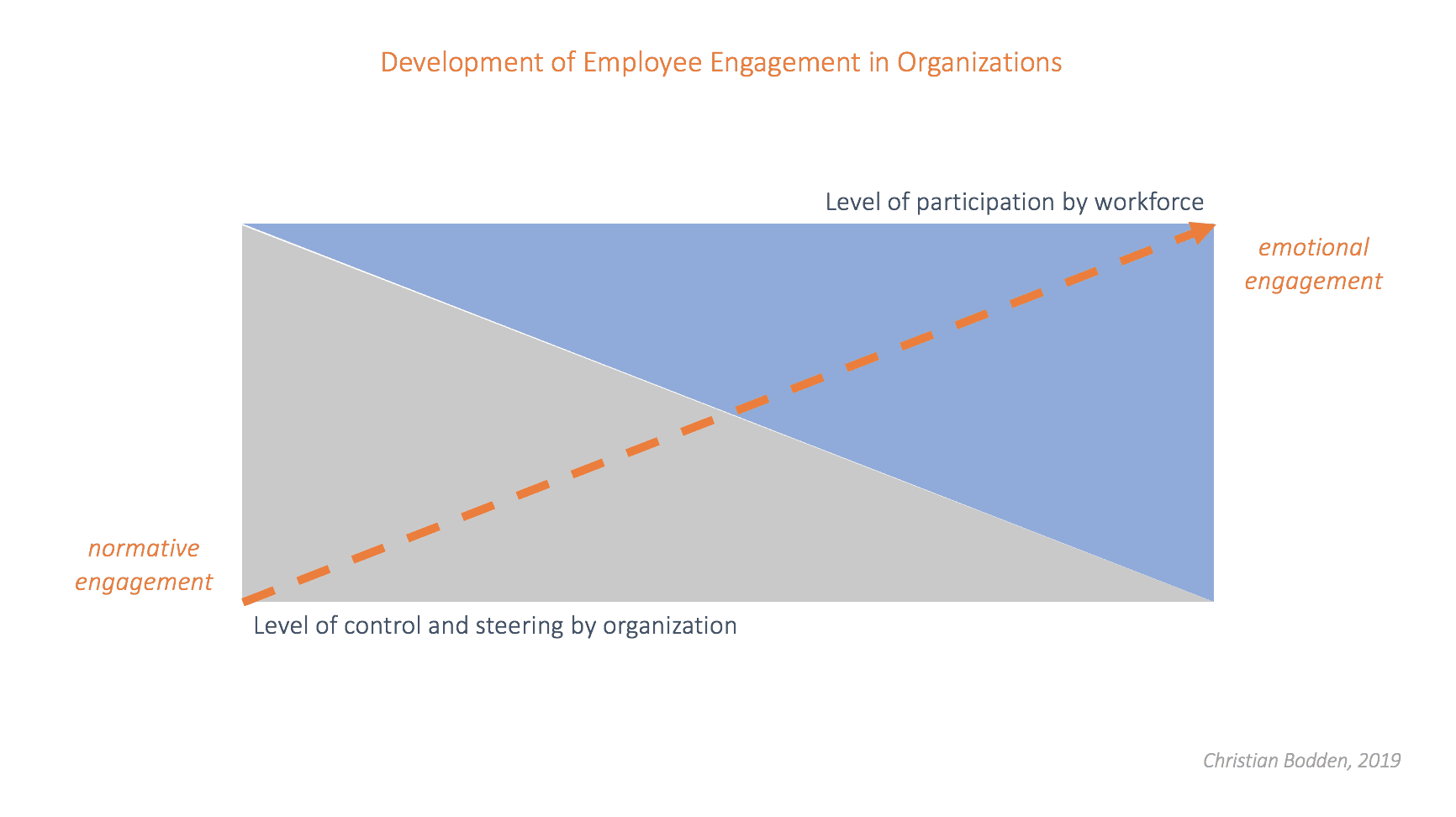
In this context, communication departments will do well to regard themselves as being an even stronger mediator in the future and to motivate people to participate in entrepreneurial development. At the same time, their influence on content must shift: from being a controlling authority to being a moderator, who frames a deliberate variety of voices and interpretations in the sense of entrepreneurial objectives.
